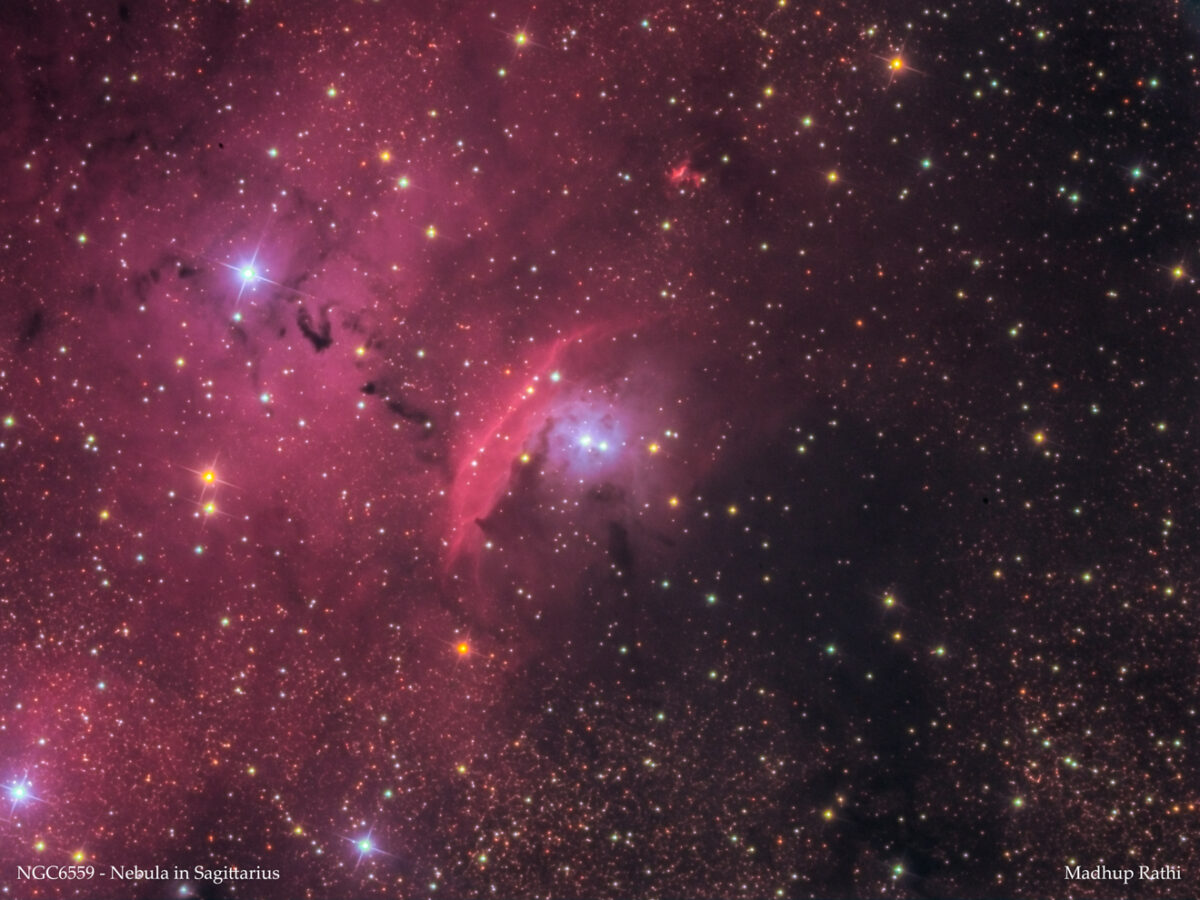NGC 6559 is a star-forming region located at a distance of about 5000 light-years from Earth, in the constellation of Sagittarius, showing both emission (red) and reflection (bluish) regions.
The glowing region is a relatively small object, just a few light-years across, in contrast to the one hundred light-years and more spanned by its famous neighbor, the Lagoon Nebula (Messier 8).
The gas in the clouds of NGC 6559, mainly hydrogen, is the raw material for star formation. When a region inside this nebula gathers enough matter, it starts to collapse under its own gravity. The center of the cloud grows ever denser and hotter, until thermonuclear fusion begins and a star is born. The hydrogen atoms combine to form helium atoms, releasing energy that makes the star shine.
These brilliant hot young stars born out of the cloud energize the hydrogen gas still present around them in the nebula. The gas then re-emits this energy, producing the glowing threadlike red cloud seen near the center of the image. This object is known as an emission nebula.
But NGC 6559 is not just made out of hydrogen gas. It also contains solid particles of dust, made of heavier elements, such as carbon, iron or silicon. The bluish patch in the center of the image shows the light from the recently formed stars being scattered — reflected in many different directions — by the microscopic particles in the nebula. Known to astronomers as a reflection nebula, this type of object usually appears blue because the scattering is more efficient for these shorter wavelengths of light.
I took this image over 15 hours. (35 images of 20 minutes of Luminance and 7 images each of the 3 colors of 10 minutes each).
